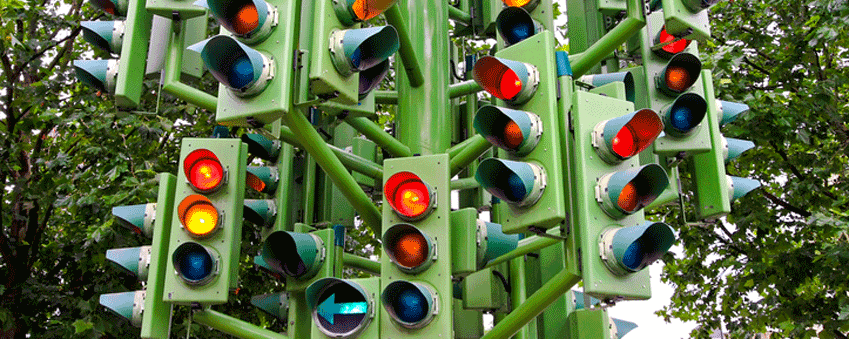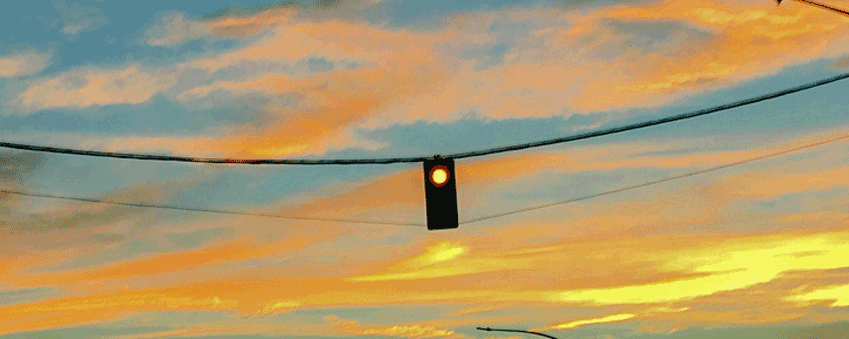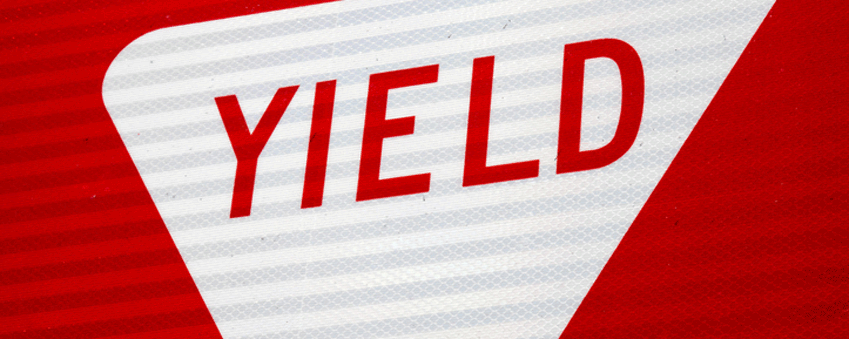A growing number of high schools no longer offer driver’s education. So, teens must use alternative means to practice and learn.
Sure, they often receive formal training from a paid driver’s ed service, but more and more, they are getting plenty of informal practice with their parents.
As a parent, you may find this to be an enjoyable way to spend time with your son or daughter while helping the young person acquire a valuable skill. Here’s just a taste of what it’s like to teach your kid to drive, in this video by video blogger, Jul B…
As you supervise your teenager during driving practice, make sure he or she obtains some experience at these types of confusing intersections…
1. The Common, Everyday Stop Sign
 It can be difficult for drivers to figure out who has the right of way at intersections with stop signs, especially at four-way stops. The National Highway Traffic Safety Administration has set forth rules to minimize decision-making difficulty. Teach your teenager various rules, verbatim. For example:
It can be difficult for drivers to figure out who has the right of way at intersections with stop signs, especially at four-way stops. The National Highway Traffic Safety Administration has set forth rules to minimize decision-making difficulty. Teach your teenager various rules, verbatim. For example:
- At a 4-Way Stop, the first driver to stop has the right of way.
- When two drivers face each other, and it’s unclear who stopped first, traffic going straight should move before traffic making a turn.
- When drivers stop at the same time and are not facing each other, then the vehicle farthest to the right has the right of way.
2. Multiple Street Intersections
 Intersections with more than two streets are uncommon, but drivers are bound to run across them occasionally even in smaller cities. The intersections are set up as five-way or six-way crossing points.
Intersections with more than two streets are uncommon, but drivers are bound to run across them occasionally even in smaller cities. The intersections are set up as five-way or six-way crossing points.
These intersections are typically controlled by traffic lights instead of stop signs in order to prevent confusion, unless there is very little traffic. They should be easy enough to navigate if the driver remains patient and remains very aware.
The biggest problem occurs when drivers try to guess when their light will turn green by watching the opposing lights. That can lead them to start proceeding through an intersection when an opposing light turns red — only to discover their light is also still red.
3. Flashing Yellow and Red Lights
 The correct way to navigate flashing yellow and red lights may seem counter-intuitive to the new driver, who probably learned that a yellow light is an early signal to stop before the light turns red. A flashing yellow, however, means to proceed with caution.
The correct way to navigate flashing yellow and red lights may seem counter-intuitive to the new driver, who probably learned that a yellow light is an early signal to stop before the light turns red. A flashing yellow, however, means to proceed with caution.
A flashing red light essentially turns a red traffic light into a stop sign. The driver must stop, even if there is no cross-traffic, and can proceed if the intersection is clear.
4. Roundabouts
 If you live in an area that has roundabouts, have your teenage driver practice on those as well. Roundabouts are becoming more prevalent as statistics confirm their safety levels, and lower cost of maintenance.
If you live in an area that has roundabouts, have your teenage driver practice on those as well. Roundabouts are becoming more prevalent as statistics confirm their safety levels, and lower cost of maintenance.
Even experienced drivers can find them confusing, however. The fundamental skill involves continuing to move forward whenever possible, but yielding to oncoming traffic. In addition, many roundabouts have two lanes, so being in the correct approach lane prior to entering the roundabout can be important.
5. Yield Signs
 These are often placed at intersections where traffic experts have determined it’s safe for drivers to slow down to check for cross traffic rather than to stop altogether. However, too many people become complacent at yield-sign intersections and just drive through.
These are often placed at intersections where traffic experts have determined it’s safe for drivers to slow down to check for cross traffic rather than to stop altogether. However, too many people become complacent at yield-sign intersections and just drive through.
Fortunately, yield signs are intrinsic features of the increasingly common roundabout. Once your teenager becomes proficient at driving through this type of road feature, they shouldn’t have too much trouble handling yield signs at traditional intersections. Nevertheless, make sure the teen gets some practice in recognizing how to behave at a yield sign.
You are the key to you child’s success behind the wheel
Most importantly, your child could greatly benefit from your own experience and knowledge (unless you happen to be a terrible drive). Make your son or daughter promise not to balk at what you tell them, and if you think of something useful, let them know – it just might save their life or the life of someone else, someday.

